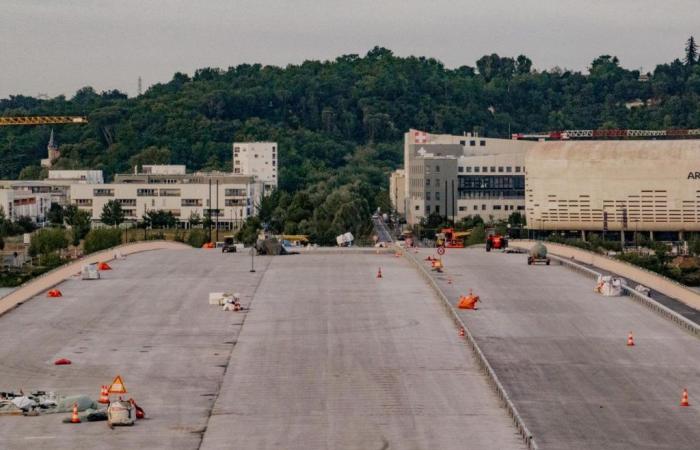> This article is taken from the 64-page special issue “A new bridge over the Garonne”, available on newsstands and in the “Sud Ouest” boutique. €3.90.
It is presented as an extraordinary bridge, or even the bridge of the 21st century.e century. When he communicated in 2013 after winning the competition for what was then called the Jean-Jacques-Bosc bridge, the Dutch architect Rem Koolhaas claimed to want to “reinvent the function and symbolism” of the urban bridge. But this Simone-Veil bridge, how is it so different from other bridges?
There is no point in looking at its length, which is simply dictated by the width of the Garonne. With its 545 meters from one bank to the other, it will not be the longest bridge in the world. To get an element of an answer, we should rather look at the width of the structure. 45 meters from one railing to the other. Almost twice as wide as the Aquitaine bridge, over which a motorway passes! “For a bridge, it is an unusual width”, confirms Olivier Hauquin, deputy in the department of civil engineering structures of Bordeaux Métropole.
More than a bridge
Why such a width? Because this bridge is not just a bridge, it is a piece of urban space stretched between the two banks. Urban planners believe that, to design the Veil bridge, Rem Koolhaas’ OMA agency was inspired by the quays of Bordeaux, left bank, renovated by the landscaper Michel Corajoud. That is to say a very open esplanade, relatively unbuilt, encouraging walking. Simone-Veil is like a piece of these quays, placed across the Garonne.
Most bridges generally offer a central space reserved for traffic, bordered on each side by more or less wide sidewalks dedicated to pedestrians and bicycles. This is the case for the stone bridges, Saint-Jean or Chaban-Delmas. The Veil bridge does not fit into this pattern. It has two distinct, parallel parts of approximately equal width. The upstream side is reserved for car traffic and public transport, about 25 meters wide. The downstream side, the one that faces the city center like a panoramic balcony, is dedicated to pedestrians, bicycles and other soft modes of transport.
“The bridge is not only intended to span the 500 metres of the Garonne riverbed, it is also the epicenter of a new sector focused on the river.”
As if there were two bridges side by side, each with its own specific mission. This is the first time that a crossing structure has reserved so much space for something other than traffic. In this sense, it recalls the Pont des Arts in Paris or the Galata bridge in Istanbul, two structures reserved for something other than just traffic.
“Hosting all types of events”
“Its width was designed as a performative void to host all types of events, such as a wine festival, a Sunday market, a car fair and more,” declared the director of OMA France, Clément Blanchet, during the presentation of the future Veil bridge at the Arc en rêve gallery in 2014. In fact, the images presented during the architectural competition show a bridge hosting large public events, with stands mounted on the deck, a large audience strolling around, various activities. This bridge claims a dual function: to cross the Garonne and to offer a new urban scene.
“The bridge is not only intended to span the 500 metres of the Garonne riverbed, it constitutes the epicentre of a new sector centred on the river”, declared one of the unsuccessful candidates to OMA in 2013. Proof that the CUB order was assimilated: an urban bridge ensuring the continuity of the renovated quays, with a limited section dedicated to car traffic.






